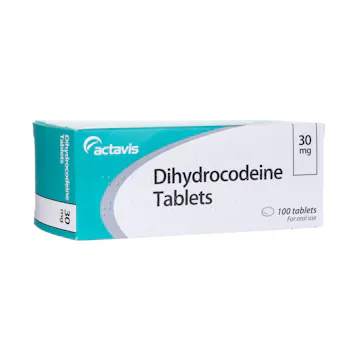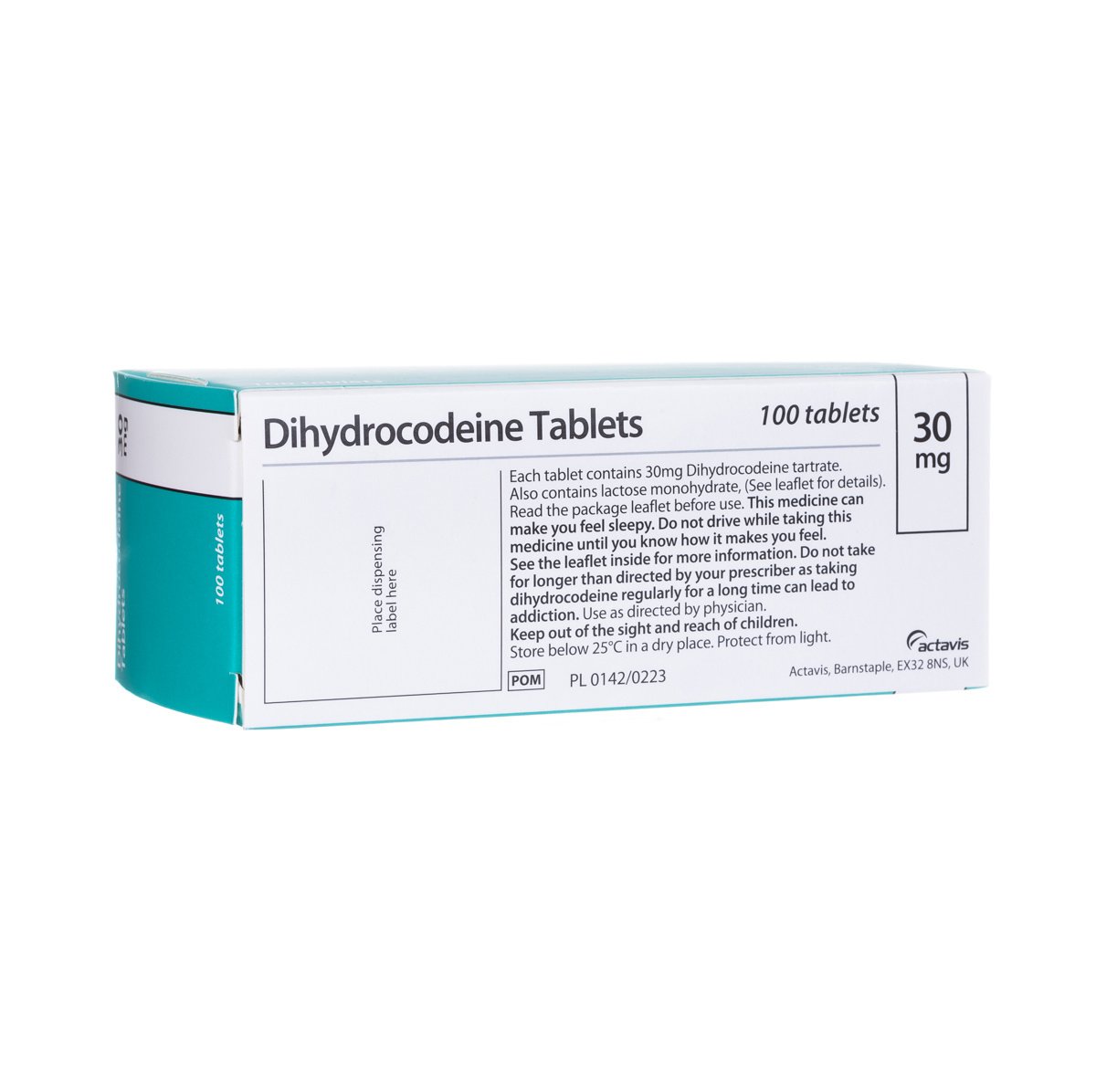Buy Dihydrocodeine Online
£70.00 – £240.00Price range: £70.00 through £240.00
Buy Dihydrocodeine Online
Buy Dihydrocodeine for Pain: Dosages, Side Effects, and Precautions Dihydrocodeine is an opiate painkiller used to treat moderate to severe pain. Dihydrocodeine is available in two different types of formulations, namely, short-acting (effects do not last as long) and sustained-release (effects last over a longer duration of time). Dihydrocodeine can be combined with other painkillers in specific preparations. For instance, it can be combined with paracetamol to form a medication known as co-dydramol. We’ll take a look at the side effects, dosages, precautions, and indications of dihydrocodeine in this article.
What Is Dihydrocodeine Used For?
Dihydrocodeine belongs to the class of medications called “opioids.” This medication is typically used to treat moderate to severe pain [1]. Some examples are as follows:-
- Nerve pain affecting your leg or back
- Pain in your joints or bones, usually from arthritis
- Nerve pain [2]
- Pain resulting from diseases affecting your blood vessels
- Cancer-related pain
- Pain after surgery
Buy Dihydrocodeine is usually recommended for long-term pain that has not been adequately managed by other painkillers, such as ibuprofen or paracetamol.
How Does Dihydrocodeine Work?
Dihydrocodeine acts on the opioid receptors in your body and works by blocking the transmission of pain signals sent from the injured or damaged area to the brain. This helps reduce or eliminate sensations and signals of pain. In other words, dihydrocodeine does not treat or cure the cause of the pain. Instead, it helps reduce your pain, making you feel more comfortable throughout your recovery. Reducing pain can be helpful in various ways. Firstly, this helps improve your quality of life, enabling you to carry on with your daily activities of living without as much hindrance. In other cases, you’ll be able to mobilize earlier after an operation, which may help prevent post-surgical complications, facilitate better outcomes, and reduce the length of your hospital stay [3].
Dihydrocodeine Dosage For Pain
The typical dose for a standard-release dihydrocodeine tablet is 30mg, taken every 4-6 hours. The maximum dose you can consume per 24 hours is 180mg. Standard dihydrocodeine begins to work fully after around 2-3 hours. Dihydrocodeine also comes in slow-release preparations at dosages of 60mg, 90mg, and 120mg. In this case, you’ll take one slow-release tablet every 12 hours, as its duration of effect will be longer. These sustained-release tablets are typically consumed twice daily. In addition to tablet preparation, dihydrocodeine is also available in liquid formulation. Liquid formulations are an option for children aged 4 and up since dihydrocodeine tablets are not recommended for children below the age of 12. Tablets should be swallowed with water. Additionally, it’s best to consume dihydrocodeine after food, as this helps lower your risk of digestive side effects, including nausea and vomiting. If you have been taking dihydrocodeine for longer than a few weeks, ensure you do not stop taking the medication on your own without consulting your prescriber.
Side Effects Of Dihydrocodeine
Buy Dihydrocodeine may lead to some side effects. Not everyone experiences them, but some side effects you may look out for include the following:-
- Drowsiness or changes in your mood
- Dizziness, ‘pins-and-needles,’ spinning sensations
- Constipation
- Dry mouth
- Abdominal pain
- Nausea or vomiting
- Abnormal heartbeat and palpitations
- Slow breathing
Since dihydrocodeine may lead to drowsiness or dizziness, it is not advised that you drive or operate heavy machinery until you can determine how this medication affects you. Dihydrocodeine may also cause an allergic reaction in some people. Signs and symptoms of an allergic reaction include rashes, hives, difficulty breathing, and swelling of the lips, face, or tongue. If you experience any of these signs, stop taking the medication and seek immediate medical attention. Because dihydrocodeine is an opioid, opioid dependence or addiction can form. To avoid this, always ensure you consume the dose prescribed to you by your healthcare provider. If the pain is not sufficiently managed, do not increase or double dose with dihydrocodeine on your own without first seeking your doctor’s advice [4]. Additionally, you should avoid taking dihydrocodeine longer than prescribed. Taking it for too long may also lead to dependence, which can lead to withdrawal symptoms (fatigue, restlessness) if the medication is suddenly stopped.
Dihydrocodeine Warnings And Precautions
Buy Dihydrocodeine is not suitable for everyone. Hence, you should inform your doctor if you have any current medical conditions or are taking any medications. You should avoid dihydrocodeine if:-
- You have a known allergy to any of the ingredients inside a dihydrocodeine preparation.
- You have a long-term condition affecting your lungs or have difficulty with breathing.
- You have experienced a head injury or condition where the pressure inside your skull is raised.
- You are dependent on alcohol.
- Your asthma is not well-managed.
- You are at risk of blocked intestines [4].
| Strength | 120 mg, 30 mg, 60 mg |
|---|---|
| Quantity | 100 Tablets, 28 Tablets, 50 Tablets, 56 Tablets |
Be the first to review “Buy Dihydrocodeine Online” Cancel reply
Related products
Buy Painkillers Medication
Buy Painkillers Medication
Buy Painkillers Medication















Reviews
There are no reviews yet.